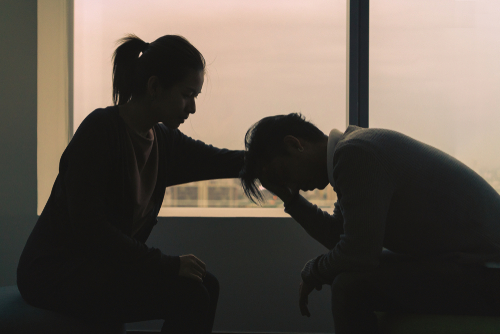Post-traumatic stress disorder (PTSD) a mental health disorder that is listed in the Diagnostic and Statistical Manual of Mental Disorders, Fifth Edition (DSM-5). It is defined by the Mayo Clinic as “a mental health condition that’s triggered by a terrifying event—either experiencing it or witnessing it.” Secondary PTSD, also known as vicarious trauma, secondhand trauma, secondary trauma, and PTSD by proxy, is the emotional distress that results when an individual hears about the first-hand trauma experience of another person (e.g., family member, close friend, neighbor, stranger on the news, etc.). The difference between PTSD and secondary trauma is that secondary PTSD occurs after an indirect exposure to threatening events while PTSD occurs due to a perceived direct threat to an individual. Akin to PTSD, the symptoms of secondary trauma can be difficult to manage without proper guidance.
Who Is At Risk?
Some people are more susceptible to secondary trauma than others. Common risk factors that increase one’s propensity for developing secondary PTSD include, but are not limited to the following, provided by the National Child Traumatic Stress Network (NCTSN):
- Mental health complications prior to hearing about the trauma
- Greater geographical proximity to the event
- Gender: females are at increased risk
- Lacking social support networks
- Acquaintance with those involved in the trauma
- Emotional dysregulation
It is important to note that not all individuals exposed to one or more of the above risk factors will inevitably go on to develop secondary trauma.
Signs and Symptoms
There are many possible signs and symptoms that could manifest because of secondary PTSD. Some examples could include, but are not limited to, any combination of the following, provided by the Boston Children’s Hospital:
- Fear
- Sleeplessness
- Anger
- Hopelessness
- Chronic exhaustion
- Physical ailments
- Agitation
- Depression
- Reckless behaviors
- Regressions
- Irritability
- Isolation
- Irregular sleep
- Difficulty with physical contact
- Anxiety
- Difficulty concentrating
- Low self-esteem
- Constant feelings of fear and worry
- Experiencing crying spells
- Tense muscles
- Social anxiety
Additional symptoms, according to American Academy of Pediatrics may include “hypervigilance, avoidance, re-experiencing…and an impaired immune system.” The signs and symptoms associated with secondary PTSD typically mimic those that present with post-traumatic stress disorder. Much like with PTSD, often the symptoms of secondary trauma interfere with one’s ability to function in his or her daily life.
Secondary PTSD Treatment
There are many treatment options for an individual struggling with secondary PTSD. An individual with secondary trauma will likely require a customized treatment plan that may include a variety of treatment modalities. The main types of psychotherapy that are commonly used to treat secondary trauma include cognitive behavioral therapy (CBT), dialectical behavior therapy (DBT), expressive arts therapy, and talk therapy. Guidance from a qualified mental health provider can help provide an individual suffering from secondary PTSD with the much-needed support in cultivating effective coping strategies and learning applicable skills to aid in the recovery process.
Disclaimer:
The information above is provided for the use of informational purposes only. The above content is not to be substituted for professional advice, diagnosis, or treatment, as in no way is it intended as an attempt to practice medicine, give specific medical advice, including, without limitation, advice concerning the topic of mental health. As such, please do not use any material provided above to disregard professional advice or delay seeking treatment.




